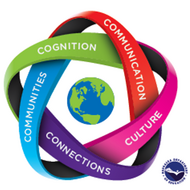Movie talk - The Present
(View Complete Item Description)Overview: (sample shown below)This OER Lesson plan/unit was created by Martha Thompson and as part of the 2023 World Language OER Summer work and training. Educators worked with NDE staff to create OER Learning Plans and materials. The attached Lesson Plan is designed for 9 - 12 World Language teachers for student learningFrench at the Novice Low to Mid level. It can be adapted to any language. The lesson plan is for a movie talk activity with writing. The activity reviews vocabulary. The students answer questions, ask questions, and discuss the video and parts of the video in French. This Lesson Plan addresses the following NDE World Language Standard(s): NE WL 1.1a, NE WL 1.1b, NE WL 1.3a, NE WL 1.3b It is expected that this Lesson Plan will take students 50 - 90 minutes to complete.
Material Type: Lesson




















